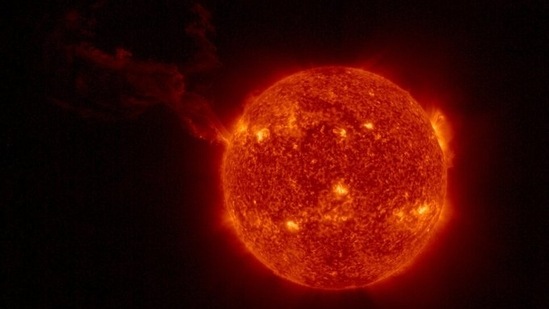How strong was this week's solar eruption? 'Earth may have dodged a bullet'
The massive eruption of February 15 came shorty after the solar explosion of February 4 which destroyed 40 SpaceX satellites.
On Tuesday, two enormous explosions took place on Sun ejecting an enormous amount of plasma and radiation into Space. But there won't be any impact on Earth as the explosions happened on the farside of the Sun. "We dodged a bullet," astronomer Dr Tony Philips wrote on his website spaceweather.com.

The explosion comes just days after a similar eruption on February 4 dragged 40 satellites of SpaceX Starlink out of their orbits.
Here is an impression of the large coronal mass ejection from the Sun
These coronal mass ejections (CME) can create geomagnetic storms but Earth is saved from any such storm originating from Tuesday's eruptions.
EAS's Solar Orbiter has captured the eruption through its Full Sun Imager and said though the CME event was not directed towards Earth but is still an important reminder of the unpredictable nature of the Sun and the importance of understanding and monitoring its behaviour.
"Some readers have asked 'How strong was the underlying solar flare?' We don’t know. Solar flares are classified by their X-ray output, but there are no spacecraft on the farside of the sun with X-ray sensors. Best guess: It was an X-flare," Dr Phillips wrote. X-flare is the most powerful category of a solar eruption. The second-most powerful eruption is classified as M-class flares.
The Centre of Excellence in Space Sciences India said solar wind conditions may escalate over the next few days due to Earth facing coronal holes. "Several small filaments are observed on the Sun. Geomagnetic and near-Earth space environment may experience low-moderate level perturbations over next few days," it said.
These eruptions and activities being observed on the Sun in the last few months are normal as the Sun is at the beginning of a new 11-year solar cycle.






